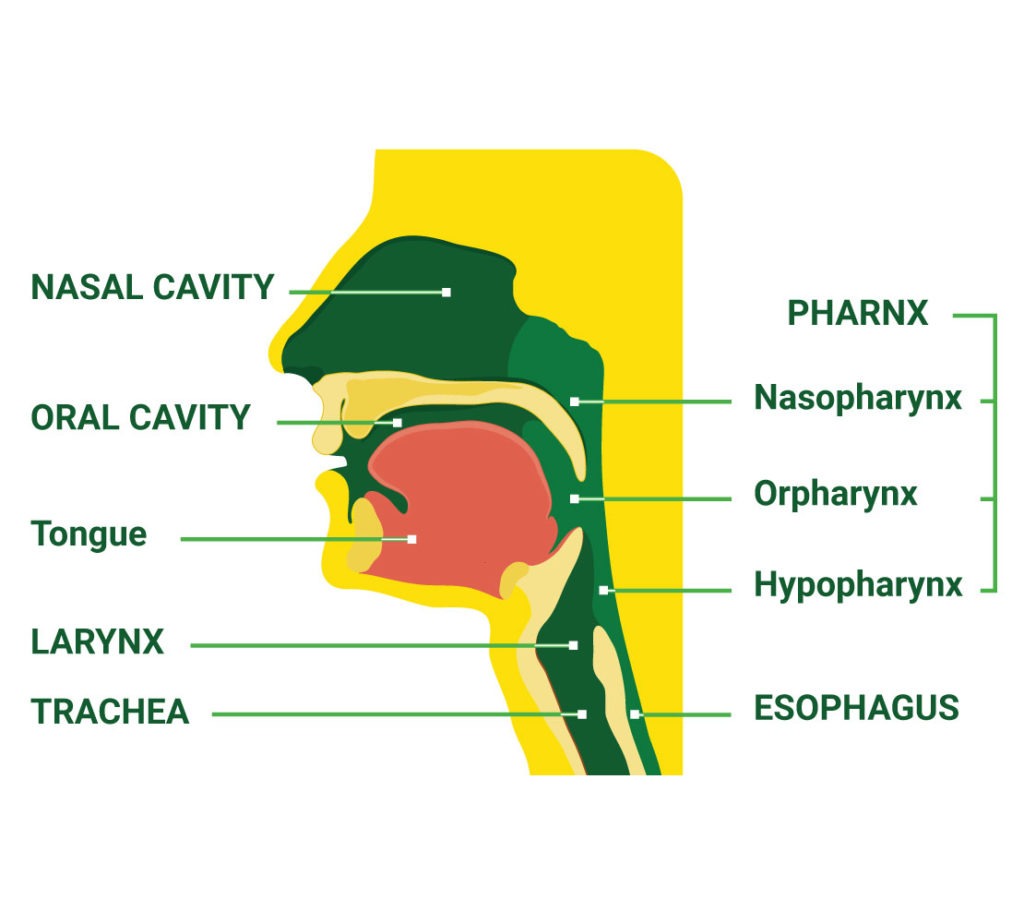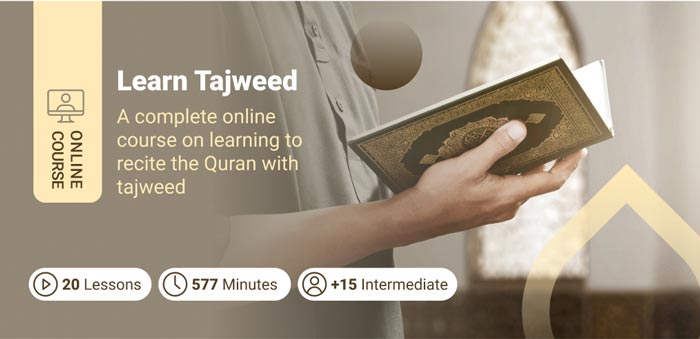Learn Quran With Tajweed
Contents
- 1 Learn to Read the Quran
- 2 Learn Quran With Tajweed: Difference Between Tajweed and Recitation
- 3 How to Familiarize Oneself With Proper Tajweed Recitation
- 4 First Key for Learning Quran With Tajweed: Correct Pronunciation of the Arabic Vowels
- 5 Third Key for Learning Quran With Tajweed: Tafkhīm and Tarqīq
- 6 Practicing Quran With Tajweed Properly
Reciting the Quran is superb, but to read the Quran beautifully is another level. There are certain rules for reading the Quran that the reciter must observe. They constitute a branch of Quranic science known as tajweed (تَجْوِيد), which literally means the beautification of the Quran in terms of the way the letters and words are pronounced. In this article on Islam4u.pro, we will explain some important points about tajweed and take a look at some of the most important rules of tajweed of the Quran. They are the three keys to achieving a good Arabic accent and thus good tajweed. If you read this article you will hopefully learn Quran with tajweed.
Learn to Read the Quran
Tajweed is the advanced level of reading the Quran. Therefore, it is essential and a prerequisite for us to learn to read the Quran properly to ideally begin learning tajweed.
As we mentioned in “How to Read Quran” article, practice is the key to learning to read the Quran. When we are well prepared and can read the Quran at a normal pace, we can take the next step, that is, tajweed. If you want to learn to read the Quran, enroll in our course “How to Read the Quran.”
Learn Quran With Tajweed: Difference Between Tajweed and Recitation
There is a difference between reading and reciting the Quran without tajweed and with tajweed. If you just recite the Quran, you may not be observing certain precise rules that make your recitation sound better and more proper. On the other hand, if you want to recite the Quran with tajweed, you must learn certain rules to perfect your recitation and make it sound more eloquent and with an accent that sounds like authentic Arabic.
Indeed, when you recite the Quran without tajweed, you are still observing some rules of tajweed such as the pronunciation of the letters and vowels, the madd (مَدّ) or lengthening of long vowels, and so on. However, tajweed is a more advanced version of reciting the Quran that has many more rules that you must learn to beautify your recitation.
How to Familiarize Oneself With Proper Tajweed Recitation
Learning tajweed of the Quran is an easy task but requires time and effort. Therefore, to learn tajweed, one must learn it both theoretically and practically. The theories and abstract rules of tajweed can be learned in many ways such as:
- Studying books of tajweed
- Enrolling in tajweed classes
- Enrolling in an online tajweed course
- Ideally, a combination of all three methods
Perhaps the most practical and easy route for learning tajweed of the Quran is through enrolling in an online course on tajweed. This is because of the constraints that exist today, such as the difficulty of finding a good tajweed teacher, especially in non-Muslim countries. Moreover, participating in conventional classes requires you to follow a fixed time and commute to the place the classes are held every day or week. Online courses remove all of these constraints.
We, at Islam4U have developed a comprehensive course for you to get started. Then comes practicing those theories in your recitation of the Quran and having them confirmed by a good tajweed teacher. Let us now look into a few important rules of tajweed that we like to call the three keys to the Arabic accent and good tajweed.
First Key for Learning Quran With Tajweed: Correct Pronunciation of the Arabic Vowels

The first key to having a good tajweed and Arabic accent is learning the short and long vowels properly. The short and long vowels are the same in terms of quality, but different in terms of quantity.
What does that mean? It means that there are three short vowels. If you double the sound of each of these short vowels, they would become the three long vowels. The short vowels are:
- Fatḥah (فَتحَة)—-> َ
- Kasrah (کَسرَة)—-> ِ
- Ḍammah (ضَمَّة)—-> ُ
The long vowels are:
- Alif al-madd (اَلِفُ المَدّ)—-> ا
- Yā al-madd (ياء المَدّ)—–> ي
- Wāw al-madd (وَاو المَدّ)—-> و
Learning the correct sound of fatḥah and alif al-madd is most important and determines how well a person’s Arabic accent is because kasrah and ḍammah and their equivalent long vowels are relatively easy to learn. To pronounce, fatḥah, the mouth opens slightly and an ‘a’ sound that sounds a little inclined to the English ‘e’ as in “best” is made. Kasrah makes an ‘ee’ sound as in “bee” but it is shorter in duration and length. Finally, ḍammah makes an “oo” sound like in the word “boot” but with about half the duration. It should go without saying that the best way of learning the Arabic vowels is listening to qualified professional reciters of the Quran and emulating the way they pronounce the vowels. This takes quite some practice. And, you know what they say: Practice makes perfect.
Second Key for Learning Quran With Tajweed: Places of Articulation of Letters

It is an obvious fact that learning the sound of consonants or letters in the alphabet of a language is just as, if not more important than learning the vowels. In Arabic, learning and mastering the correct pronunciation of the letters can prove more difficult than learning the vowels. This is because every letter has a unique individual sound that is hard to make for non-Arab speakers. In other words, there are no two letters that have the same sound unlike some other languages such as English. So, given the fact that there are 28 letters in the Arabic alphabet, there are also 28 different sounds for each of these letters.
In this article, we will go over one of the most important places of articulation. That is, the place of articulation of the letters ḥā (ح) and ‘ayn (ع). These two letters have the same place of articulation, meaning the top part of the throat. In order to make the sound of ḥā, you must tighten the top part of the throat and let the air out. The resulting sound is a hoarse sound that is heard in a few dialects and languages including Arabic.
‘Ayn has the same place of articulation except it is voiced, meaning the vocal cords are together when air passes through them, while they are apart when ḥā is pronounced, making it voiceless. If you want to learn all the places of articulation of letters in Arabic, enroll in our “How to Read the Quran,” or “Tajweed Course” if you want a better understanding of them. We will guarantee you that you will learn the places of articulation of all the letters in the Arabic alphabet, insha’Allah.
Third Key for Learning Quran With Tajweed: Tafkhīm and Tarqīq
One of the keys to mastering the Arabic accent and tajweed of the Quran is learning the rules of tafkhīm (تَفخِيم) and tarqīq (تَرقِيق) of the letters and vowels. First, let us define the two concepts. Tafkhīm literally means fattening or thickening. In practice, it is the thick pronunciation of certain letters and vowels. Tarqīq on the other hand means thinning, and in practice, it is the thin pronunciation of certain letters and vowels.
To make things simple, let us take a look at one of the rules of tafkhīm first, then we will take about the opposite of tafkhīm, meaning tarqīq. Seven letters that are known as the letters of tafkhīm. They are always pronounced with thickness. The seven letters of tafkhīm are:
- ص
- ض
- ط
- ظ
- خ
- غ
- ق
The tafkhīm of these seven letters is especially noticeable when they are pronounced with an alif al-madd. In fact, the alif al-madd is also pronounced with tafkhīm. Tafkhīm is applied by raising the root of the tongue to the roof of the mouth and the mouth is full. The mouth also opens vertically when the letters of tafkhīm are pronounced with an alif al-madd.
Learning Tajweed Better by Tarqīq of the Letters
Tarqīq is the opposite of tafkhīm. You simply pronounce the letters other than the letters of tafkhīm, which are known as, letters of tarqīq, with thinness, or with an empty mouth. The root of the tongue is not raised and the mouth opens horizontally when pronouncing fatḥah and alif al-madd. In other words, alif al-madd is also pronounced with tarqīq. There are two exceptions to the letters of tarqīq. Sometimes, rā (ر) and lām (ل) are pronounced with tafkhīm, especially when they have fatḥah or ḍammah. However, because they can also be pronounced with tarqīq, they are considered letters of tarqīq, unlike the letters of tafkhīm that are always pronounced with thickness.
Tafkhīm and Tarqīq Make the Arabic Language Unique
Some languages have letters and vowels that are mostly pronounced thinly such as those in East Asian countries, while some languages have letters and vowels that are mostly pronounced thickly like some languages in African countries. However, Arabic has both. This makes Arabic a very colorful and diverse language in terms of its accent and does not make it sound monotonous. If you master tafkhīm and tarqīq of the letters and vowels of Arabic, you have learned one-third of the Arabic accent.
Practicing Quran With Tajweed Properly
One of the best ways of practicing proper tajweed is reciting the Quran before a master of tajweed. This can be done in person with a qualified teacher of tajweed. The teacher tries to correct your tajweed problems as you recite verses of the Quran in tartīl (تَرتيل) or taḥqīq (تَحقيق) style. Read the “How to Read Quran” article to know more about these two styles.
So, this is the best way of practicing proper tajweed. It is hoped that by learning Quran with tajweed, we enjoy our own recitation and others enjoy it too, insha’Allah. Feel free to enroll in our tajweed course, which is called “Learn Tajweed.” It is only $17. We assure you that this course will prove highly beneficial.
Read More On Islam4u



allah bless you